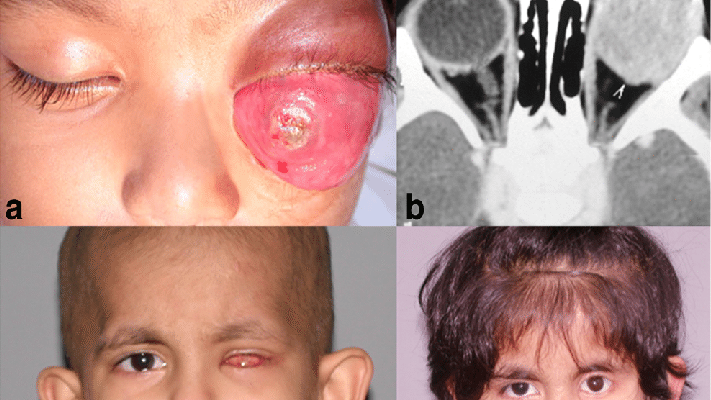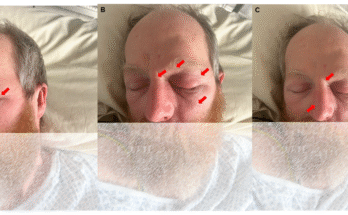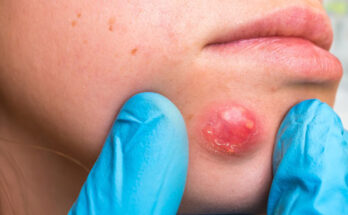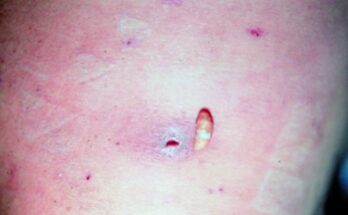When we look at the image of the young child with a massive growth pushing out from the eye socket, it’s both heartbreaking and alarming. What this child is likely suffering from is an orbital tumor—a serious condition that can threaten vision, appearance, and even life if left untreated. While the image is difficult to look at, it highlights an important medical issue that many aren’t aware of, especially in children.
An orbital tumor is a mass or growth that develops within or around the eye socket (the orbit). These tumors can be either benign (non-cancerous) or malignant (cancerous). They might affect muscles, nerves, fat, or connective tissues that help support the eye. In children, one of the most feared types of orbital tumors is rhabdomyosarcoma, a fast-growing cancer that often begins in muscle tissue and can spread rapidly if not detected early.
The most common symptoms of an orbital tumor include swelling around the eye, bulging of the eye (known as proptosis), pain, difficulty moving the eye, vision problems, or even complete eye closure due to pressure. In the case of the child in the image, the size, discoloration, and ulcerated texture of the mass suggest a severe and advanced tumor that urgently needs medical intervention.
Children can develop orbital tumors for several reasons. While rhabdomyosarcoma is the most common malignant tumor of the orbit in children, other possibilities include optic nerve gliomas, dermoid cysts, lymphangiomas, and retinoblastomas. Some of these conditions may be present at birth but go unnoticed until they grow large enough to cause symptoms. Others develop over time and can appear suddenly, as seen in more aggressive cases.
Diagnosing an orbital tumor involves a detailed medical examination, imaging tests like MRI or CT scans, and often a biopsy to confirm whether the tumor is benign or malignant. Early diagnosis is key. With proper medical care, treatments such as surgery, chemotherapy, or radiation therapy can save not just a child’s vision but potentially their life. In cases where the eye or orbital structures are damaged beyond repair, reconstructive surgery might be necessary to restore appearance and function.
Beyond the physical symptoms, the emotional toll on the child and their family can be overwhelming. Facial deformities, especially in children, can lead to bullying, isolation, and deep emotional trauma. That’s why psychological support and family counseling play a critical role alongside medical treatment.
As hard as this image is to see, it carries a powerful message: awareness saves lives. Many children with similar conditions can recover and lead normal lives—if they get the right treatment at the right time. The goal is to recognize the signs early, seek professional help, and support families through the journey of healing.
If you ever notice unusual swelling, changes in eye movement, or a growing mass around the eye in a child or adult, don’t ignore it. Reach out to a healthcare provider immediately. The earlier these tumors are caught, the better the chances for a full recovery.



